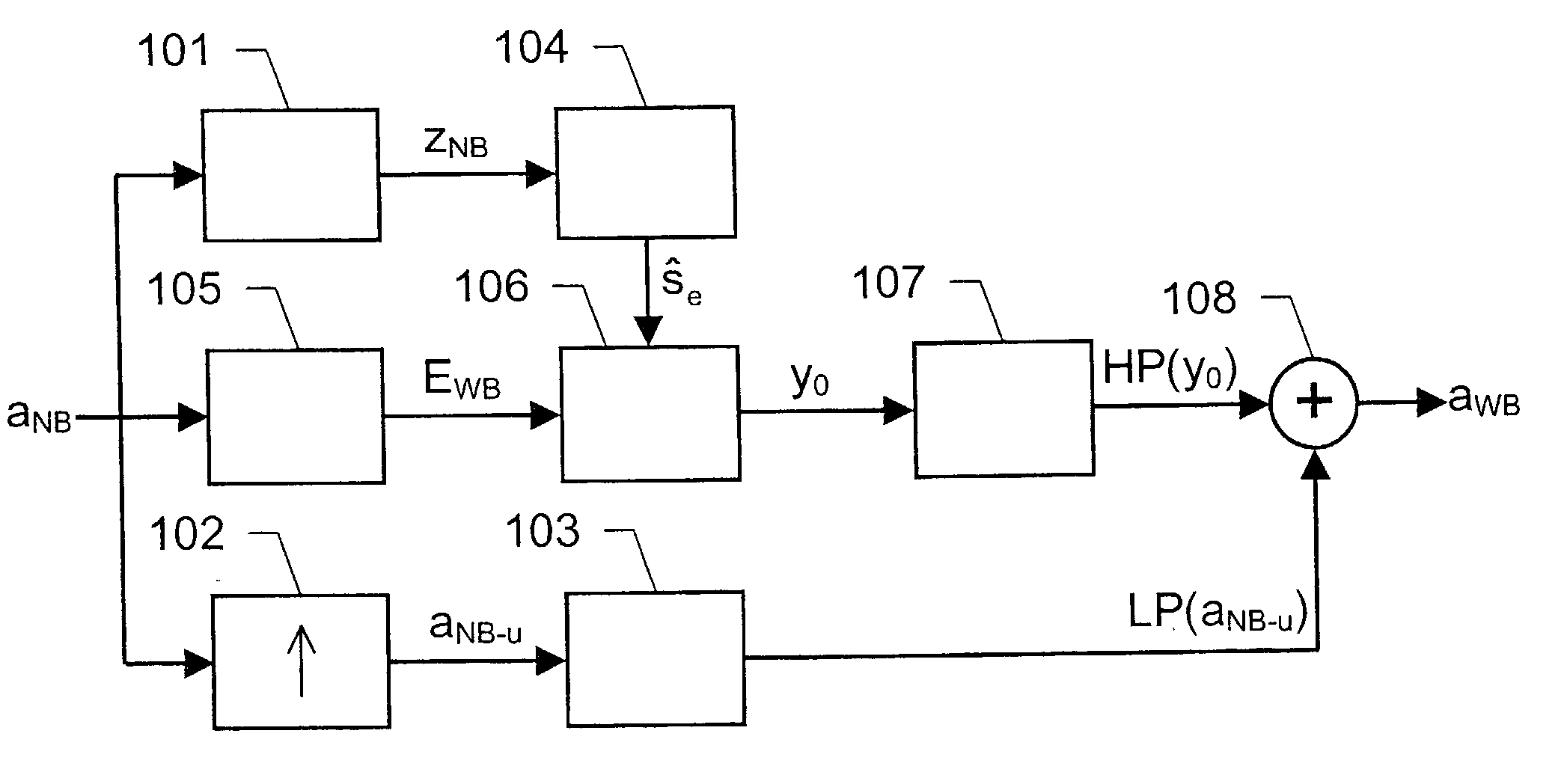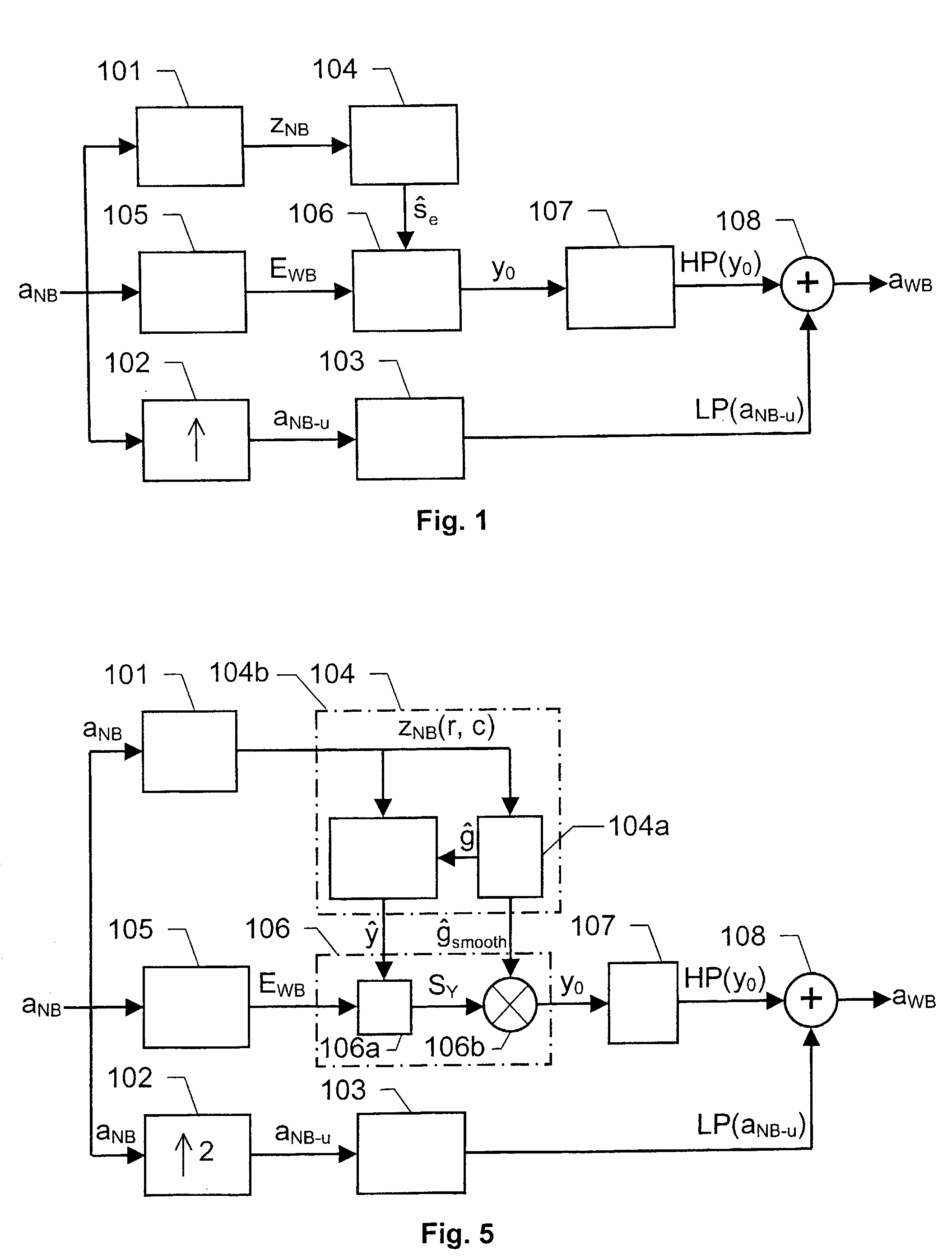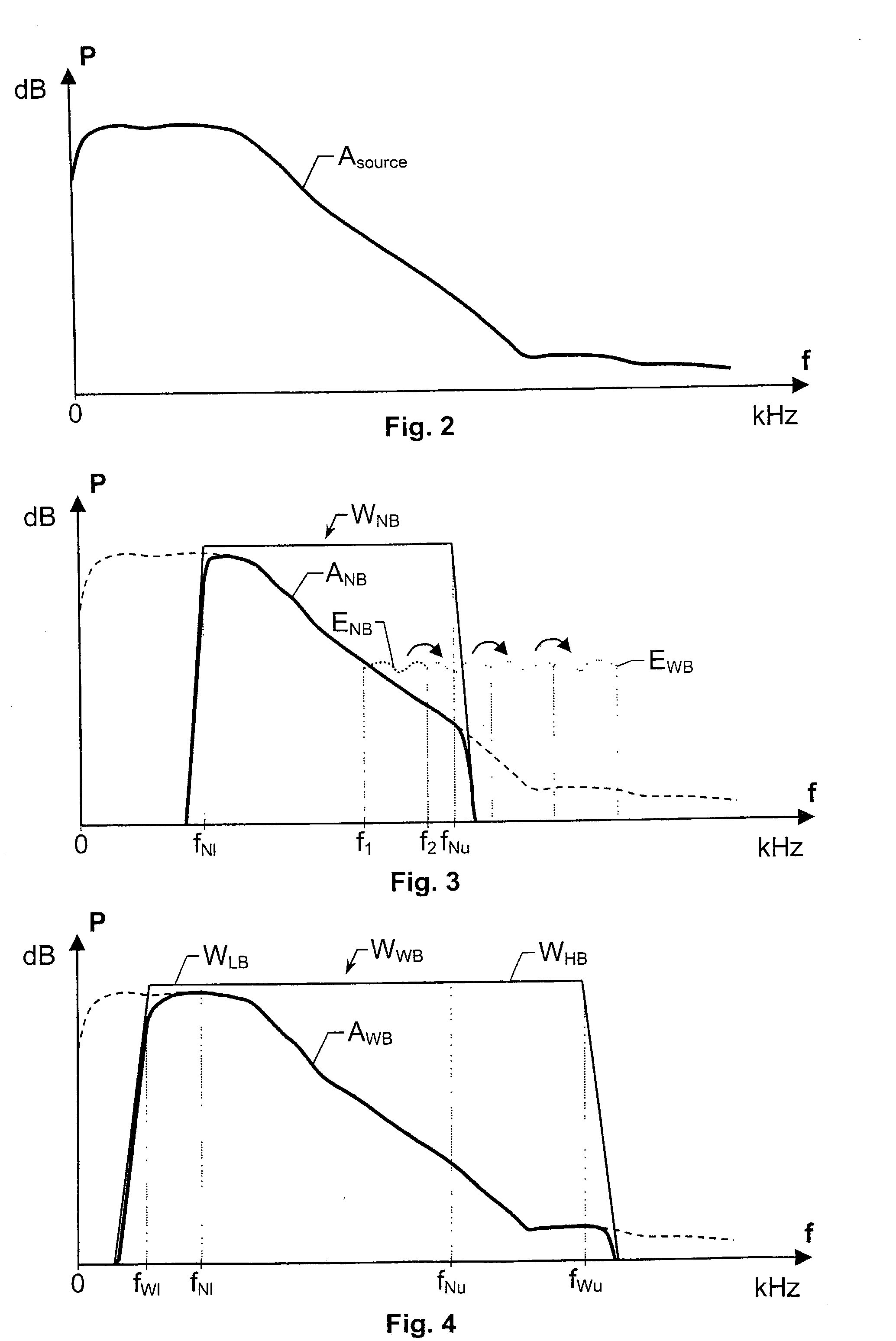Bandwidth extension of acoustic signals
a technology of acoustic signals and bandwidth extension, which is applied in the field of bandwidth extension of acoustic signals, can solve the problems of reducing the transmission capacity of reconstructed voice signals to less than half, and affecting the sound quality of reconstructed voice signals
- Summary
- Abstract
- Description
- Claims
- Application Information
AI Technical Summary
Benefits of technology
Problems solved by technology
Method used
Image
Examples
Embodiment Construction
[0033] FIG. 1 shows a block diagram over a general signal decoder according to the invention, which aims at producing a wide-band acoustic signal a.sub.WB on basis of a received narrow-band signal a.sub.NB, such that the wide-band acoustic signal a.sub.WB perceptually resembles an estimated acoustic source signal a.sub.source as much as possible. It is here presumed that the acoustic source signal a.sub.source has a spectrum A.sub.source, which is at least as wide as the bandwidth W.sub.WB of the wide-band acoustic signal a.sub.WB and that the wide-band acoustic signal a.sub.WB has a wider spectrum A.sub.WB than the spectrum A.sub.NB of the narrow-band acoustic signal a.sub.NB, which has been transported via a narrow-band channel that has a bandwidth W.sub.NB. These relationships are illustrated in the FIGS. 2-4. Moreover, the bandwidth W.sub.WB may be sub-divided into a low-band W.sub.LB including frequency components between a low-most bandwidth limit f.sub.WI below a lower bandwi...
PUM
 Login to View More
Login to View More Abstract
Description
Claims
Application Information
 Login to View More
Login to View More - R&D
- Intellectual Property
- Life Sciences
- Materials
- Tech Scout
- Unparalleled Data Quality
- Higher Quality Content
- 60% Fewer Hallucinations
Browse by: Latest US Patents, China's latest patents, Technical Efficacy Thesaurus, Application Domain, Technology Topic, Popular Technical Reports.
© 2025 PatSnap. All rights reserved.Legal|Privacy policy|Modern Slavery Act Transparency Statement|Sitemap|About US| Contact US: help@patsnap.com



